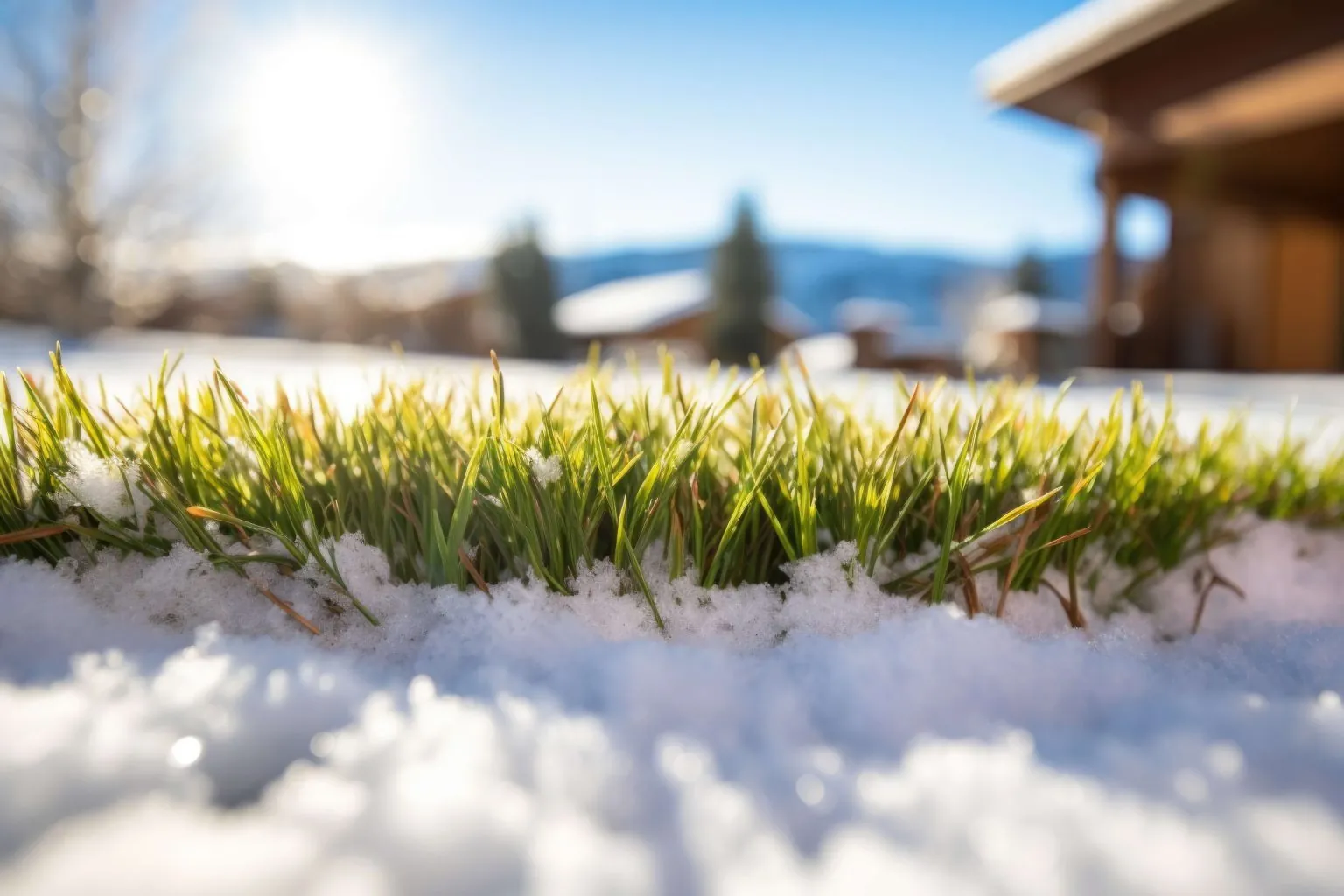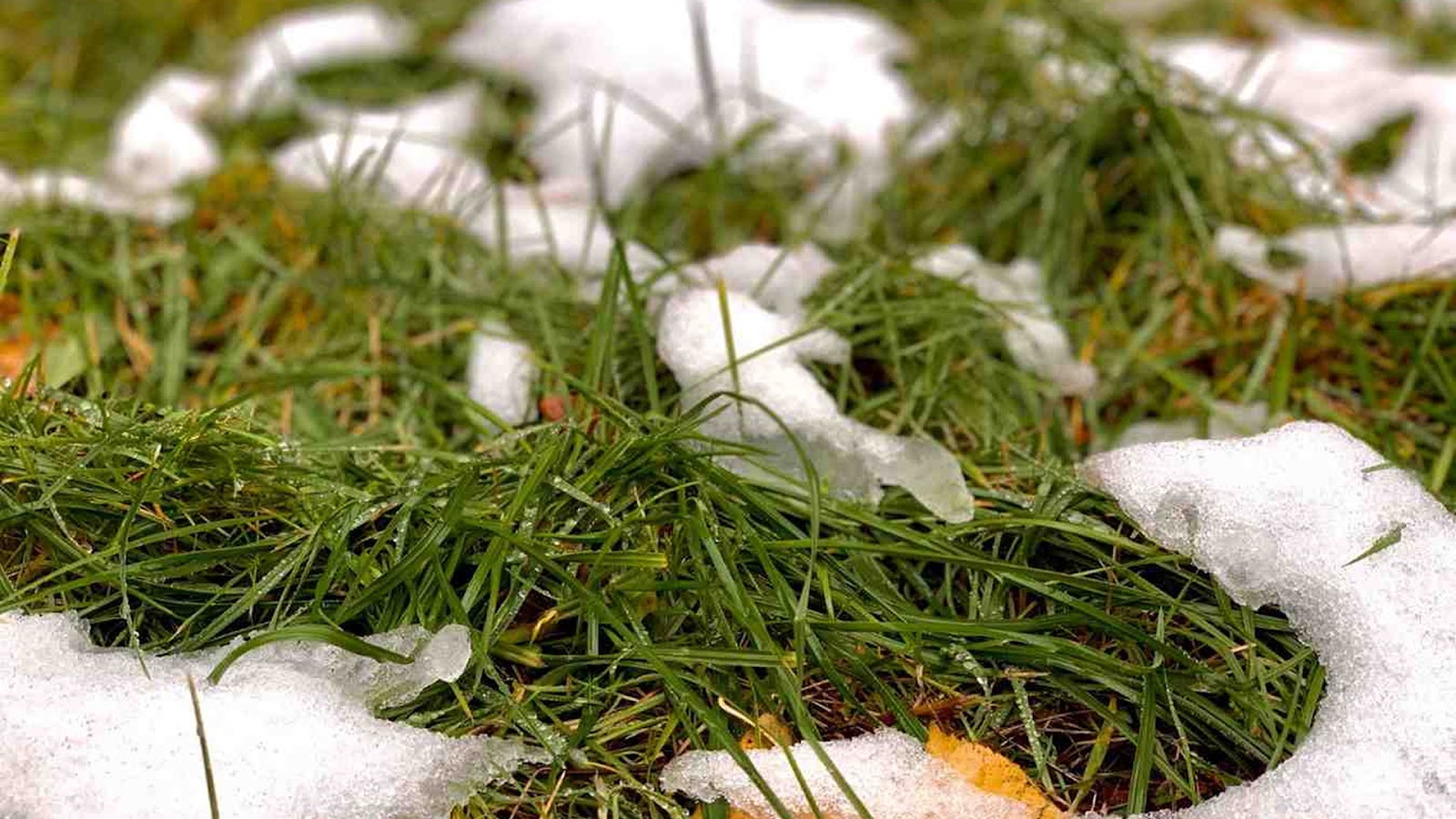What Is the Best Height to Cut Grass Before Winter?
Last Updated on October 14, 2025 by Duncan
Are you wondering how short to cut the grass before winter? To prevent the grass from snow mold and cold stress, cut it 2 to 2.5 inches tall before the winter season.
Typically, this entails mowing warm-season grasses half an inch higher than usual and cool-season grasses half an inch lower than normal.
Does this sound complicated? It’s not. Keep reading.
Should you cut your grass shorter or longer before winter?
How short you cut your grass before winter is pegged on the type of grass you grow and where you live. If your lawn has heavy snow and mold troubles, trim your cool-season grass short.
Low mowing discourages pink and gray snow mold, which appears in spring as the snow melts. Snow molds are particularly abundant in cool-season grasses in the northern United States, where they thrive on cold, wet, matted lawns.
Long grass promotes these conditions, whereas short grass discourages them.
Mowing low keeps voles and other pests at bay. These little animals prefer to nest in taller grass, so a shorter cut keeps them from overwintering on your lawn.
This lower mowing height for the final trim of the season also helps remove turf and plant waste, ensuring the grass does not become too tall if it is still growing.
If your lawn is cold-damaged, cut your warm-season grass taller.
Warm-season turfgrass is more vulnerable to cold damage because it is best suited to the warm southern United States. Although not scientifically established, higher mowing heights are bound to prevent warm-season turf winterkill.
A taller cut increases the leaf area of warm-season grass blades for photosynthesis, potentially reducing winter damage. Increased height also helps to crowd out weeds and improves the lawn’s traffic tolerance.
To be on the safe side, increase warm-season grass mowing height by half an inch to prepare it for winter.
How short should you cut cool-season grass before winter?
The recommended height for cutting cool-season grasses before winter is 2 to 2.5 inches. While this is the case, you should note that it also depends on the annual mowing height and the grass’s health.
To be on the safe side, lower your mower’s mowing height by no more than one notch, or one-half inch. This will allow you to clean up any leftover leaf mulch or debris and trim the lawn before winter arrives.
How short should you cut warm-season grass before winter?
Warm-season grasses are more sensitive to winterkill, so retain them at their current height or mow them one-half inch higher in the winter. This strategy protects the grass and soil from the cold weather.
Warm-season grasses are divided into two types: low-mowed (Bermuda, carpetgrass, centipede, Zoysia, and dwarf St. Augustine) and tall-mowed (Bahia, buffalograss, and standard St. Augustine).
A good cutting height for the last mow of the fall for low-mowed grasses is 2 to 2.5 inches, while you should keep tall-mowed grasses at 3 to 4 inches during the winter.
As you mow your lawn, note that the optimal winter mowing height varies by grass type and area. To receive a more correct winter height for your warm-season grass, visit your local Extension office.
When should you stop mowing for the year?
When air temperatures fall regularly below 55 degrees Fahrenheit, it is usually too chilly to mow the lawn. The grass is dormant; therefore, you must cease mowing.
Cool-season grasses stop growing when the soil temperature falls below 40 to 45 degrees Fahrenheit. Warm-season grasses have a varied seasonal growth cycle and can go dormant when average soil temperatures dip below 50 to 55 degrees Fahrenheit.
The first frost of the year is also an indication to stop cutting the lawn. By the first frost, your lawn should be at winter cut height.
If you live in a mild environment, your grass may thrive all year. In such a case, you’ll have to mow some over the winter.
How do you prepare for the last mow of the year?
Check your area’s first frost date to figure out when your cool-season grass will stop growing. Then, work backward to determine how many mows you have left, allowing you to alter your mowing height progressively.
You will need to mow the lawn less regularly, and you must remove no more than one-third of the blade per mow. If you remove more than that, you will overstress the grass. And you don’t want this, do you?
Other things you should prepare for the last mow of the year include:
Sharpen the Mower Blades: Clean cuts are essential for healthy grass. Dull blades shred grass, making it more susceptible to disease. Sharpened blades produce a cleaner cut, letting the grass recover more quickly so, always keep your lawn mower blades sharp at all times.
Cut to the Right Height: For cool-season grasses, aim for 2-2.5 inches, whereas warm-season grasses should be 1.5-2 inches long. This optimal height helps protect your lawn during winter.
Clear debris: Remove all leaves, sticks, and other debris from your lawn. Debris can choke grass, creating a breeding environment for mold and vermin. Clearing it away lets your grass breathe.
Check for Problem Areas: Look for signs of sickness, fungus, or bare areas. Addressing these concerns before winter can prevent them from worsening and reduce the need for repairs in the spring.
FAQs
Can you mow your lawn in winter?
You should avoid doing it unless you reside in a warm, subtropical area. You should note that dormant or frozen grass is particularly vulnerable to harm, and the mower will leave unsightly tracks in the moist soil.
Should you cut new grass before winter?
Yes, you should cut new grass before winter, particularly for northern grasses such as Kentucky bluegrass, perennial ryegrass, and fescues. If you seed the grass at the appropriate time, you’ll have plenty of time for a few mowings before dormancy and frost.
Is it dangerous to trim grass before it freezes?
You should avoid cutting the grass if you expect frost within the following two days. This is because frost slows grass growth, making your turf more susceptible to diseases and pests. And you don’t want this, do you?


